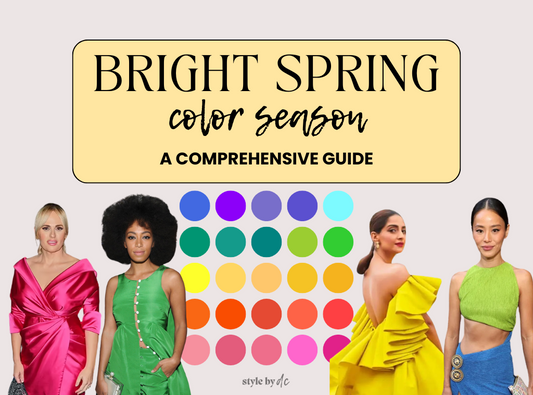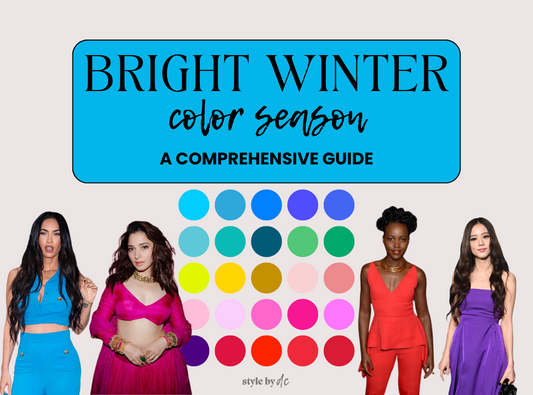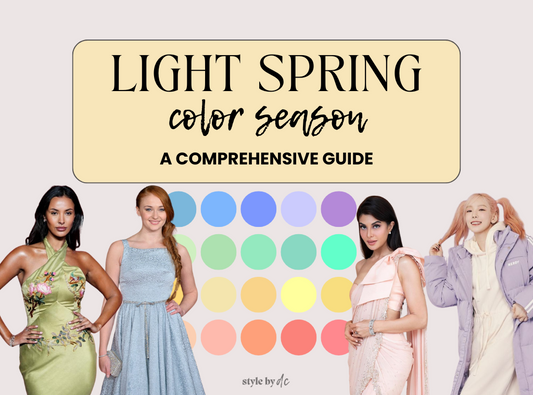If you’ve ever taken a color quiz or asked for feedback in a Facebook group only to hear, “You look good in both warm and cool colors!”—you’re not alone.
In fact, one of the most common challenges I see with the 16 season color analysis system is how misunderstood neutral undertones and mixed features can be.
Let’s clear that up.
First: What Is “Neutral” Skin?
The dimension I see most people laser focus on is undertone. But here’s the thing - we can’t actually see undertone. Scientifically speaking, it's the way that the blood mixes under the skin that can lean more cool (blue toned) or warm (red toned). Because we have layers of skin on top - the surface coloring of the skin is often mistaken for undertone. The only real way to figure out undertone is by holding up different colors to your face - this will “bring out” the underlying coolness or warmth.
For some though, there isn’t a strong pull towards cool or warm and in that case we’d label their undertone as “neutral”. But that’s only one part of the picture.
Here’s what most people miss:
❌ Undertone is not the same as color season
✅ Undertone is one piece of a much bigger puzzle
16 Season Color Analysis Is Built for Mixed Features
This is where the 16 season color analysis system shines.
The four “True Seasons” (True Spring, True Autumn, True Summer, True Winter) are reserved for people whose coloring clearly leans warm or cool. But the remaining 12 “neutral seasons” are designed specifically for people with mixed features:
-
Cool undertone + warm hair? → You might be a Soft Summer or Light Summer
-
Neutral undertone + high contrast? → Bright Spring or Bright Winter could work
-
Warm skin + cool eyes? → You may land in Deep Autumn or Soft Autumn
In each of these scenarios, the color temperature (warm or cool) is sometimes not the most important aspect. We then can look at depth and clarity to figure out if they suit light, deep, bright or soft colors. Each of these neutral seasons still leans warm or cool—but with flexibility built in.
This is what makes the 16 season system far more accurate than a simple warm/cool test. It accounts for the nuances. It also helps debunk popular color analysis myths like “redheads can’t be a cool season”. While rare, it’s entirely possible for someone to have a cool undertone and warm hair. Humans are far too complex and dynamic to have such limiting rules around color.
Every Palette Has Cool and Warm Hues
One of the biggest myths in color analysis is that palettes are divided into “warm-only” or “cool-only” shades. That’s actually not entirely accurate!
Each of the 16 season color palettes includes a full range of colors—with a dominant undertone influence, but not a hard rule. Yes, even True Winter (our most cool-toned season) has a yellow—it’s just an icy, cool yellow. And even True Autumn has purples—but they’re earthy and warm-leaning. If you take a look at any of the “neutral” seasons you’ll notice that they have a mix of warm and cool. This is because there are different variances in skin tone and color that sometimes makes a color of the opposite temperature balance well.
If you’re neutral, you’re likely someone who wears some warm shades beautifully and some cool shades just as well. The goal is to find which version of each color works for you. And that’s when we start to look at the depth and clarity of the colors as well.

Why “Undertone” Isn’t Everything
Here’s the truth: Many people get fixated on undertone when trying to figure out their season.
But undertone alone won’t determine what palette works best.
Other key factors in 16 season color analysis include:
-
Value contrast (how light or dark your features are in relation to each other)
-
Chroma (how soft or clear your coloring is)
- Depth (overall darkness or lightness of features)

Someone might have a neutral or cool undertone, but with extremely muted features—making a bright Winter palette look harsh, and a Soft Summer palette a better fit.
Someone else may have warm skin but sharp contrast in features, landing them in a cooler, high-contrast season like Bright Winter.
This is where I see most people get stuck in color analysis - getting way too fixated on warm vs. cool. While it obviously has some impact, it’s not the highest impact in all cases.
It’s Not About Getting a Label. It’s About Finding Alignment.
If you’ve been frustrated trying to DIY your season because you’re not “clearly warm” or “clearly cool,” the good news is:
✨ You’re exactly the kind of person the 16 season system was made for.
You don’t need to fit into a box. You just need to understand what’s visually balanced for you—and how to use color as a tool to support your natural features and personal style.
And if you're feeling stuck between seasons, know that you're not alone. Most people aren't an obvious fit—and that's why I approach color analysis with a mix of structure and intuition.
Want to explore your season without the guesswork?
My DIY Color Guide is built for people just like you—those with mixed features, neutral undertones, or who feel like none of the traditional rules make sense.
Or, if you’re ready for a more guided transformation, learn more about my virtual color analysis process.



